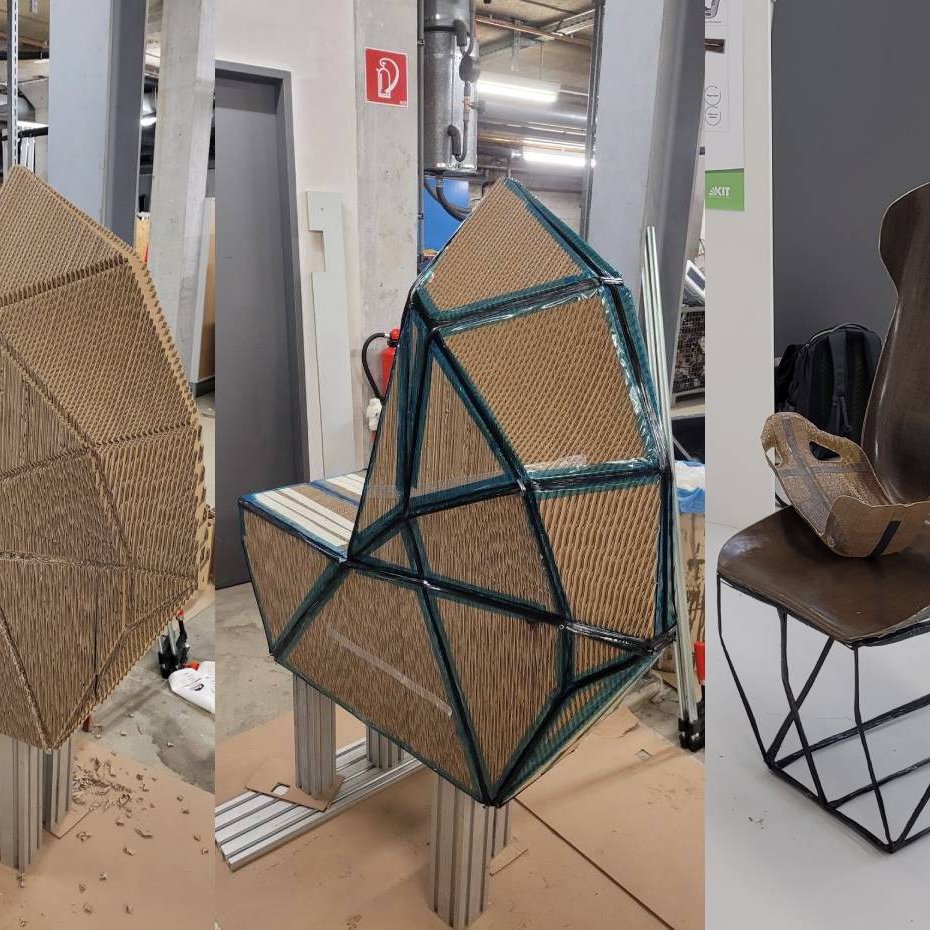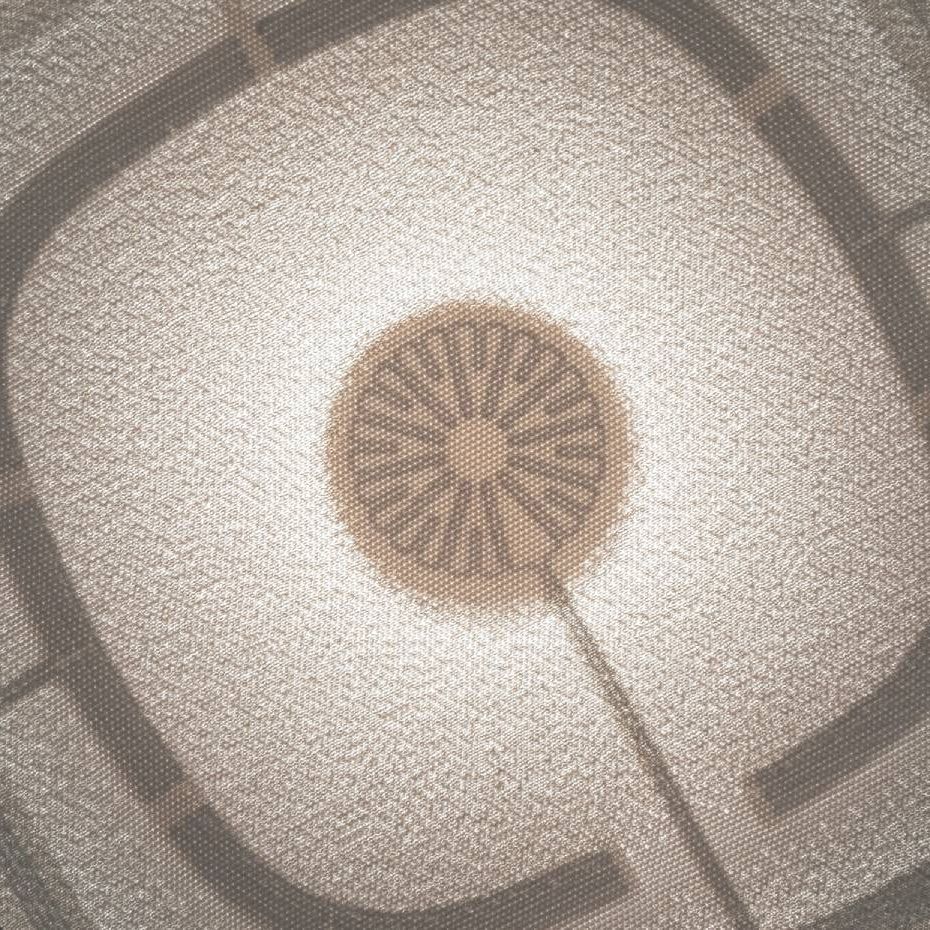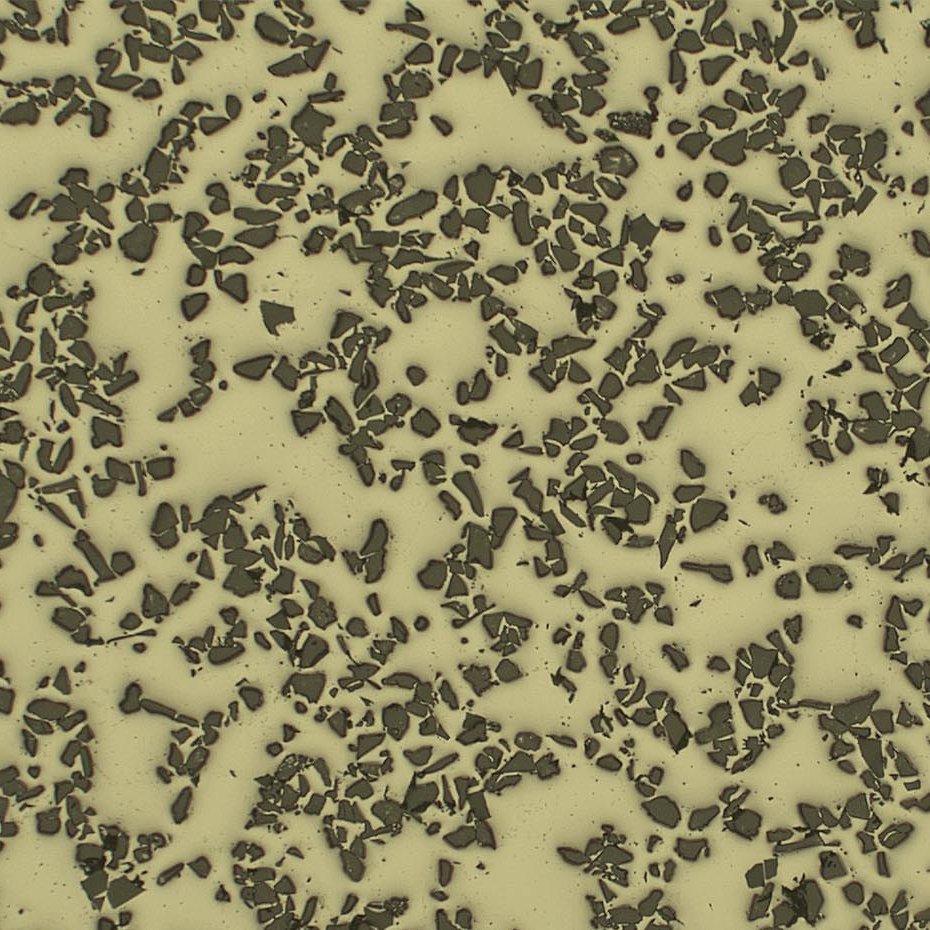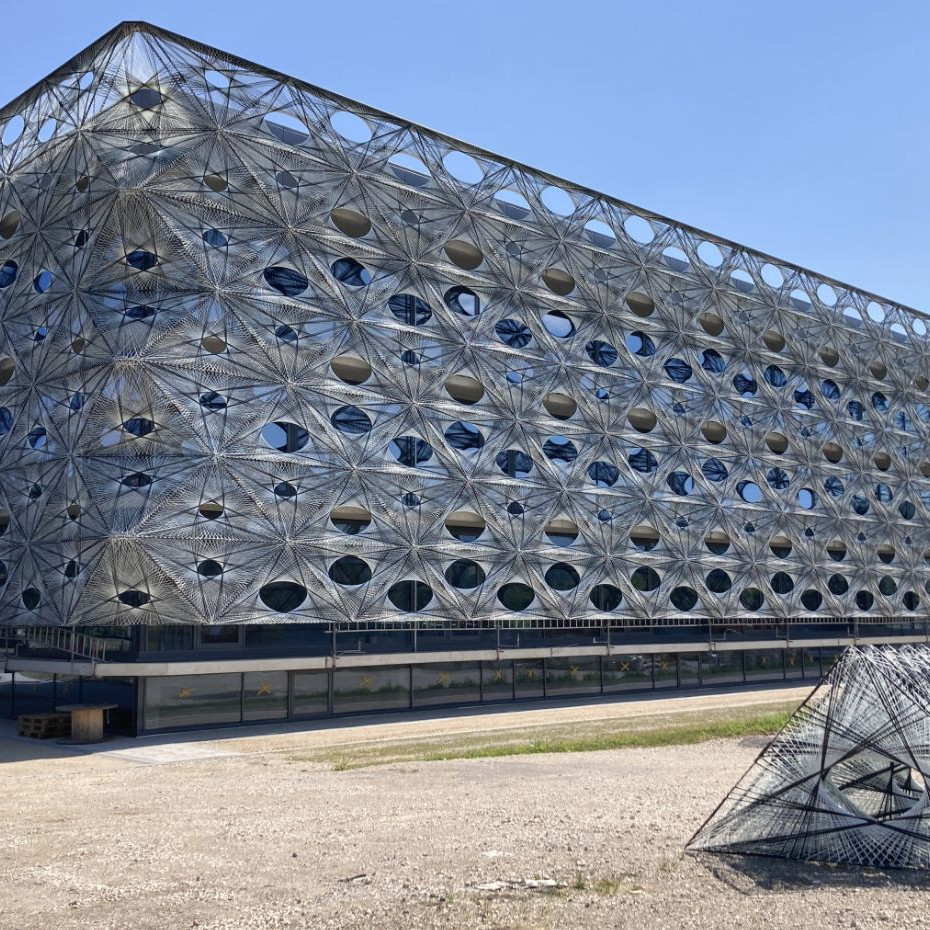Solid Lightweights
New lightweight solutions with carbon fibers and natural materials
form 241
November/December 2011
publisher
Birkhäuser (Basel)
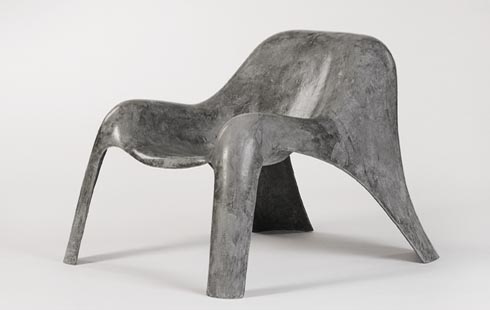
At both fairs Composites Europe in Stuttgart and Materialica in Munich, the clear trend in favor of lightweight design solutions in the transport and building industries was more than obvious. For designers too, there were several exciting attractions on view.
Lightweight elements
The lightweight construction element by Jens-Hagen Wüstefeld represents a new solution, whereby an extremely high rigidity could be realized with a minimal input of materials. The lattice structure resembles a space-frame and is constructed from triangles and withstands forces from all directions, distributing these over the adjoining planes and edges, thereby creating an optimal distribution of forces.
Using this structure, weight can be reduced by 85 percent com pared to solid materials. Round, spherical and profiled elements can be produced in a whole variety of materials and connected with one another.
Another load-bearing lattice structure for core materials in sandwich composites is Octamold. Based on the octahedron, this represents an optimal balance between surface and volume. Com parable with the foam bubbles in a soap solution, a balance of forces was achieved and the space filled without gaps. Through connecting at least two planes, a layer made completely of octahedrons is produced, in which all quadrangular areas show joining and contact surfaces.
A new lightweight design sandwich composite to ensure maximal material efficiency when building using natural materials is the lightweight bamboo panel of BLPB created by Wassilij Grod at the Bauhaus University in Weimar. It consists of a middle portion made of slanted pieces of bamboo tubes which is then bonded to the surface area. This structure delivers high compressive strength at reduced material costs, as wastage is reduced to a minimum through the use of loop structures. The strength of the panel can be influenced by the alignment of the loop profiles.
3D-Core represents an ideal core material for the manufacture of lightweight shipping or aerospace structures. This is because the foam matrix of hexagonal elements, connected via delicate links, can adjust itself to light curvatures and promotes the absorption and dissipation of thrust, compressive and flexural forces. The production processes can be essentially improved in comparison to traditional laminates. The amount of supports and epoxy systems required is sharply reduced.
Aramide, glass and carbon fibers have long been used in the construction of vehicles to reinforce plastics. Only more recently have architects discovered that they are well-suited to the realization of especially thin structures in the building industry. Even designers are increasingly using the opportunities offered by these fibers in combination with stone materials. As such, designer Lars Schmieder introduced his ultra-thin concrete stools which use structures strengthened by carbon fibers. They have a wall thickness of mere millimeters and are being produced by Paulsberg in Dresden. Via the special manufacturing process, not only angles but also depressions, elegant beveling and bends can be created in concrete.
www.gestaltung.hs-magdeburg.de
www.uni-weimar.de
www.paulsberg.co
image source: Paulsberg (Design: Lars Schmieder)
Parali Design from rice straw
22 June 2025
At the Parali design studio, Aarushi Mittal uses traditional techniques to…
Natural fiber reinforced car seat
22 October 2023
The focus of the project "Design for Recycling" is a seat shell that is made…
Liquid Metal Dispensing
28 August 2025
By embedding conductive liquid metals in stretchable textiles and soft…
Furniture for the additive mass production
10 August 2024
The Swedish interior agency "Industrial Poetry" has investigated the inherent…
IGNIS – Light from waste heat energy
12 August 2020
The availability of affordable, independent and, above all, clean electrical…
Brake disc with reduced fine dust
21 April 2021
Fine dust endangers our health. One of the main sources is traffic, especially…
Texoversum
15 July 2023
With the "Texoversum", Reutlingen University has put into operation a training…
Bolometer chips for precise power measurement in fusion reactors
11 April 2025
At Fraunhofer IMM, a so-called bolometer chip was developed for precise power…
Xarvio – Digital Farming
8 January 2021
BASF Digital Farming GmbH has received the renowned Crop Science Award for the…

